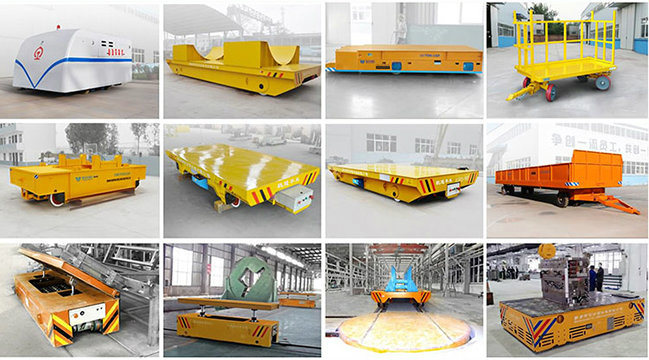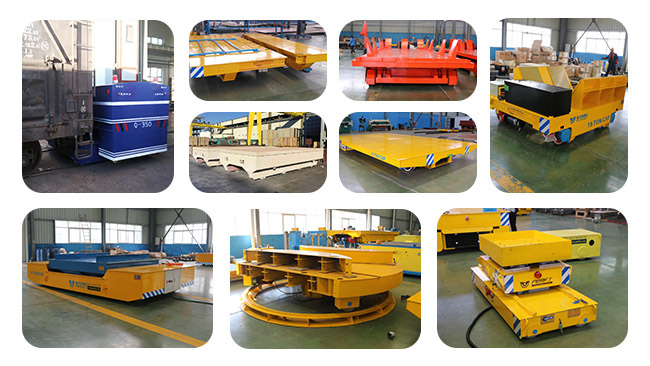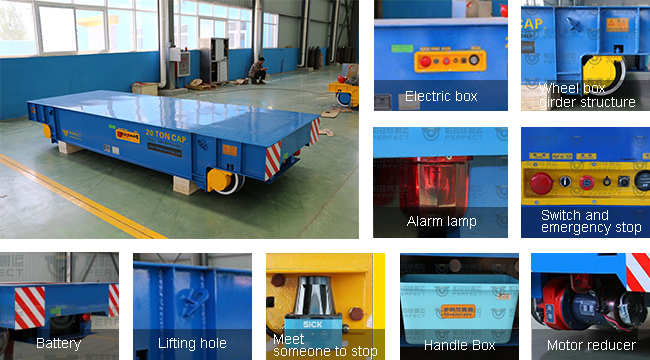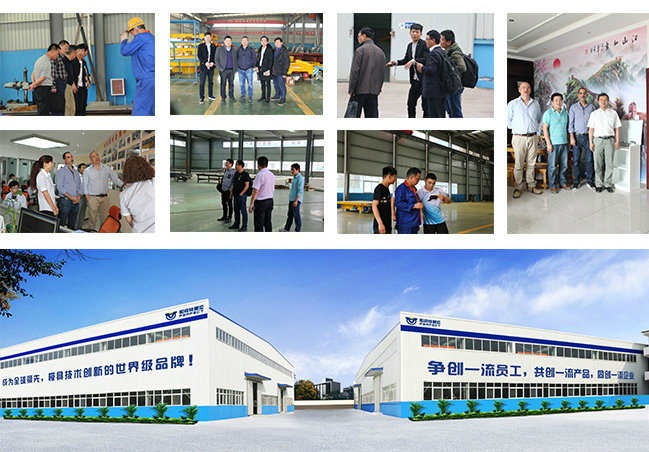Aluminum Coil Production Line Use Electric Flat Rail Car
Casting polyurethane prepolymers involves a process where a liquid mixture of polyols and isocyanates is poured into a mold or container and allowed to cure or solidify. This process is commonly used in various industries such as automotive, construction, and manufacturing. Polyether Polyurethane Prepolymer,Cpu For Elastomers,Polyseter Prepolymer For Ring,Prepolymer For Pu Plate XUCHUAN CHEMICAL(SUZHOU) CO., LTD , https://www.xuchuanchem.com
1. Introduction of
flat rail car
PERFECT's transfer carts, also known as cross flat cart, transfer trolley, electric flat cart, have advantages such as simple structure, easy operation and maintenance, large load capacity, and are widely used in machine manufacturing and metallurgical factories to transport heavy objects across warehouses. These rail transfer carts are suitable for various industries including steel mills, paper roll plants, painting rooms, shipbuilding, new factory projects, machine processing lines, heavy industry, airports, and more. They help move materials and equipment from one location to another, from the warehouse to the workshop.

2. Customization of
flat rail car
Rail carts include:
Rail transfer carts, cross-rail transport trolleys, curved rail transfer carts, S-shaped railway transport carts, L-shaped track transporters, etc.
Industrial trailers include:
Flatbed trailers, factory trailers, utility trailers, workshop transfer trailers, airport baggage cargo trailers, car transport trailers, motorized transfer trailers, etc.
Cargo transportation solutions include:
Die carts, coils transport carts, pipe transfer carriages, steel beam transporters, aluminum plate transport vehicles, transformer carrier bogies, etc.
Special handling equipment include:
Ladle transfer trolleys, ferry transfer wagons, cross-rail transport equipment, motorized turntables, vacuum furnace transfer carts, automatic vehicles, etc.

3. Application of
flat rail car

4. Working Principle
Rail-guided transfer carts receive power from batteries, cables, or rails, which is then directed to the electrical control box to operate the various electrical components. The main power is delivered to the motor and reducer, enabling the wheels to rotate and ensuring stable operation of the transfer carts.

5. Parameter of
flat rail car
Model
BXC-2t
BXC-20t
BXC-50t
BXC-100t
BXC-150t
Rated Load(t)
2
20
50
100
150
Table Size (mm)
Length(L)
2000
4000
5500
6500
10000
Width(W)
1500
2200
2500
2800
3000
Height(H)
450
550
650
900
1200
Wheel Base(mm)
1200
2800
4200
4900
7000
Rail Inner Gauge(mm)
1200
1435
1435
200
2000
Wheel Diameter (mm)
270
350
500
600
600
Running Speed (m/min)
0-25
0-20
0-20
0-20
0-18
Motor Power(kw)
1
2.2
5
10
15
Battery Capacity
180
180
330
440
600
Battery Voltage
24
48
48
72
72
Running Time When Full Load
4.32
4
3.3
3.2
2.9
Running Distance for One Charge(km)
6.5
4.8
4
3.8
3.2
Recommended Rail Model
P15
P24
P43
QU100
QU100
6. Power Supply Mode of
flat rail car
The motorized material handling equipment manufactured by Henan PERFECT Handling Company can be designed with different power supply modes, which include storage battery, cable, conductive rails, and so on. According to customers' different application environments, we recommend the most suitable transfer solution with different power supply modes:
- Storage Battery Powered Transfer Carts: Suitable for long running distances, low usage frequency, "S", "L", and curved tracks, anti-explosion, and ferry occasions.
- Cable Reel Powered Transfer Carts: Ideal for high-frequency use, short running distance, and straight route applications.
- Conductive Track Powered Motorized Transport Trolleys: Get power from conductive tracks installed on the floor. Suitable for high-frequency use and large loading capacity. Strict requirements for track installation, requiring insulation.
- Steerable Transfer Carts: Used for multidirectional heavy-duty transportation on cement floors and steel plates with rotation required. Can turn freely in 360 degrees and are powered by batteries, unaffected by trailing cables in small or limited spaces.
7. Our Factory and Customers' Visit
8. Q&A
What Are The Advantages of Using a Transfer Cart?
For smaller loads, manual carts can be dedicated to specific workplace activities such as shuttling materials. This often makes the carts more available for use. Transfer carts are more accommodating for moving long loads through restrictive passageways or doorways. For heavier loads, transfer carts are an excellent affordable choice for their ability to handle heavy loads. Transfer carts are compact in design and work well in areas with limited floor area. Another advantage over lift trucks is how the cart deck can be customized to suit specific loads.
What Product Handling Applications Use Transfer Carts?
1. Coils (V-Groove deck)
2. Tanks (size/stability for uniformly distributed loads)
3. Assemblies (fixture cradle) for a complete build or to send a partially completed product to the next station (tractors, heavy equipment machinery)
4. Sub-Assembly shuttle from one line to another line
5. Maintenance cart for motors and pumps
6. Equipment support (stand-off deck) for navigating loads to locations within a plant facility
7. Material shuttle for steel tubing (flat decking with guard rails)
8. Elevating platform for assembly process (integrated screw-jack table)
9. Sand casting (flat decking)
How can Transfer Carts be customized?
Please tell us:
What load or product will be transferred onto the cart?
What is the weight of the heaviest lift or load?
What are the dimensions? (Length; Width; Height)
What is the
Here is a step-by-step guide on how to cast polyurethane prepolymers:
1. Prepare the mold: Clean the mold thoroughly and ensure it is free from any debris or contaminants. Apply a mold release agent to facilitate the easy removal of the cured polyurethane.
2. Measure and mix the components: Measure the desired amount of polyol and isocyanate components. The specific ratio will depend on the desired properties of the final product, which can be found in the product's technical data sheet. Pour the measured components into a clean mixing container.
3. Mix the components: Use a mechanical mixer or a high-speed drill with a mixing attachment to thoroughly mix the polyol and isocyanate components together. Make sure to mix for the recommended amount of time specified by the manufacturer to ensure complete homogeneity.
4. Degassing: After mixing, it is important to degas the mixture to remove any trapped air bubbles. This can be done by placing the mixture in a vacuum chamber and applying vacuum pressure for a specified period of time. Alternatively, a vacuum degassing unit can be used.
5. Pouring the mixture: Once the mixture is properly degassed, pour it into the prepared mold or container. Take care to avoid introducing any additional air bubbles during the pouring process.
6. Curing: Allow the poured mixture to cure at room temperature or, if necessary, in a temperature-controlled environment. The curing time will vary depending on the specific polyurethane prepolymer used and the desired hardness or flexibility of the final product. Follow the manufacturer's recommendations for curing time and temperature.
7. Demolding: After the polyurethane has fully cured, carefully remove it from the mold or container. Use caution to prevent any damage to the cured part.
8. Post-curing (optional): Depending on the specific polyurethane prepolymer used, post-curing may be required to optimize the material's properties. This can be done by subjecting the cured part to elevated temperatures for a specific period of time.
It is important to note that casting polyurethane prepolymers requires proper safety precautions, such as wearing appropriate personal protective equipment (PPE) and working in a well-ventilated area. Always follow the manufacturer's instructions and guidelines for handling and working with polyurethane prepolymers.